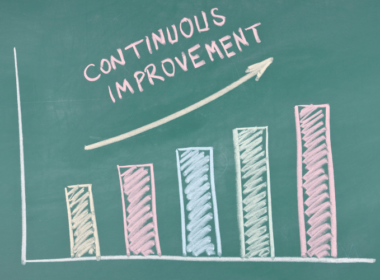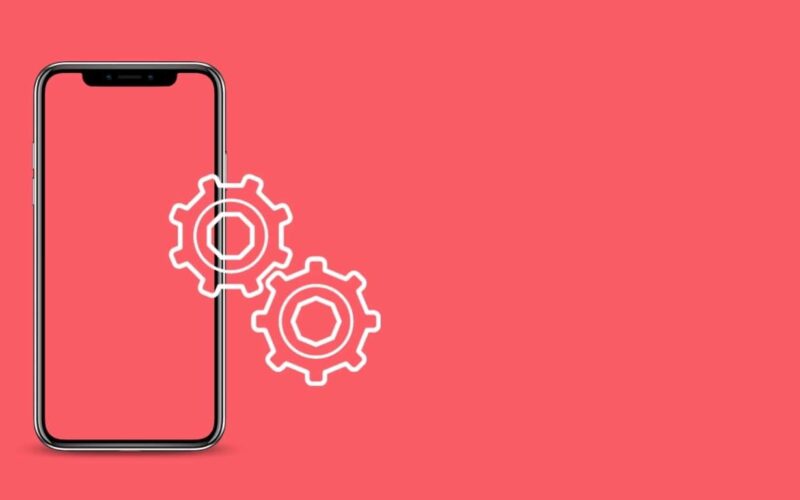You might have come across the news about Russia & Ukraine, of course, you have. If you are in India, you may have also read the news around BharatPe & Ashneer, did you not? And there are so many stories out there where some sort of conflict exists. In fact, chances are while you are reading this, an employee somewhere is resigning because s/he is in conflict with the team/management, a couple is separating ways because they too have a conflict, and maybe Shaheen, our UI/UX & design thinking consultant is arguing with the client over the color tone or font-weight used in the newly designed mobile app for the metaverse.

Well, I don’t know much about geopolitical conflicts, founder-investor conflicts, or couple relationship conflicts, but I know that the outcomes of any conflict can be less devastating and peaceful if the involved parties put honest effort into resolving the issue rather than focusing on proving themselves right or wrong. And if the parties also trust each other and agree that the outcome of the conflict should be a win-win for both of them, then the conflict resolution process becomes very smooth.
That’s the case with Shaheen-&-Clients’ design conflict. They both know that their ultimate goal is to come up with a design that works for the app’s end users, which in turn would positively influence the business KPIs. And so, to date, we have not seen any of the Shaheen-Client conflicts taking ugly turns.
But is the outcome intent enough to drive positive conflict resolutions? Nope. The tone, the mediator, context, personal biases, human psychology, cognitive response to particular words, body language, and so many other things are at play during a conflict resolution process.
Read this insight to understand how conflicts can arise even in the organizations with the best possible workplace culture, and how you can successfully see through the conflict resolution process. I’ll demonstrate these through real-life workplace conflict scenarios but the names are masked for privacy purposes. Yes, I was the mediator in all three workplace conflict scenarios that I’m about to discuss.
How to resolve workplace conflicts?
Before we dive into the three promised conflict scenarios, I feel, it would be appropriate if you have the cultural context of codewave. So, basically, codewave is a flat org, with no micro-management, no senior/junior, no boss/employee, and no politics. Instead, we have flexible timings, work-life balance, and we self manage ourselves to an extent where we decide our own salaries, we decide the projects we are gonna be part of, the days we will be working from the office, and we set our own timeline for the projects, of course, all these should align with organizational goals and essential KPIs. It’s complete harmony, but conflicts do arise as we are a fast-growing company. Wait, that reminds me of the fact that we recently hit an ARR of USD 1 Million as well, wooohoooo!!!
Conflicts do arise, even in this sort of culture, because we are a fast-growing company, we are on a hiring spree for the last three years, and new members sometimes do take time to settle in as they are coming from diverse backgrounds and organizational cultures.
Conflict case 1: Conflict arising from wrong attitude, improper communication, and biases
At Codewave, we have an office hospitality executive, who has been with us for quite some time. She is really humble, down-to-earth, and someone who takes her responsibilities very seriously. But recently, one of the members at Codewave got into conflict with her. Even this member has spent quite some time with Codewave and is very humane and supportive in nature. But she was relatively new and had joined us right before the pandemic-19, so, she was not that well acquainted with the hospitality executive. Yes, we were working remotely for the last two years, and so most of the members had not got an opportunity to interact with each other.
What was the conflict about? The new member was not happy with the work of the hospitality executive and she reported the same to the peer group (Team Codewave). The team suggested that she speak about the same with the hospitality executive, and see if that solves the problem. But after a while, this resulted in a non-abusive but rude & high-voltage one-sided exchange between the involved stakeholders. Apparently, the new member was the one who was upset. So, I entered into the picture as a mediator. I spoke with the hospitality executive first and got to understand her stance on the issue. And then, I spoke with the other involved person. She was still angry. I listened to her version as well. And then, I asked a set of questions, like –
- How often has the situation been repeated?
- Are other members also facing this issue with her?
- Do you feel that the next person is purposefully doing this?
- Do you feel there is any bias involved from any side or any external influencer?
- What exactly made you furious that resulted in a high-voltage verbal exchange?
- Did you think about the situation from the hospitality executives’ point of view?
- Do you have any preconceived notions about the hospitality executive?
Apparently, the hospitality executive had completed the task that was requested. But when she asked to cross-verify, the person who raised the issue took it as offense and shouted. In conflict situations like these, there is no wrong side or right side. It’s just that ineffective communication is the only culprit.
So, if you observed, all my questions were targeted at helping the next person become more self-aware of their cognitive responses to the issue. Result? The person realized that the issue shouldn’t have been elevated to where it got. Both of them spoke again, this time in a more aware, more friendly manner. No egocentrism, no anxiety. Asking the right set of questions to help the stakeholders recognize biased perceptions, to make them more self-aware and context-aware is a great way to resolve these types of conflicts that arise from ineffective communications or misleading perceptions.
Conflict case 2: Conflict arising from communication gap, ego-clashes, anxiety, assumptions, perceptions
The second instance was where two of my colleagues, who were working on the same project got into a collaboration conflict. There was a conflict in the team, but no one was aware. The project milestones were getting delayed, and that’s when I made the rockstar entry, like Ajit Doval does, to resolve conflicts. Just kidding, Ajit Doval is a legendary guy, and I’m nowhere close to what he has already done.
When I started speaking with the project members, I found that lead-member 1 was not communicating sufficiently with lead-member 2, and vice-versa. There was a clear communication gap. But were any of them not good communicators? No, they both possessed brilliant command over the language. Then what was the root cause of conflict?
Basically, they were working on a cross-platform app development project. One was working on the Android app, and the other was working on the iOS version of the app. Now, though they were developing for different platforms, in cross-platform development there is a significant amount of overlapping code & APIs which can be used by both the platform developers to speed up the development process. Yes, cross-platform app development technologies significantly reduce the app development time & costs as well. But to reap these benefits, developers must collaborate efficiently with each other to write that 40%-60% of overlapping code.
Speaking with both of them, revealed to me that both the developers started to think that the other member was not liking their involvement and so they should rather develop on their own. And this small anxiety-triggered perception led to a lot of other assumptions. So, unlike the last scenario, I adopted a different approach to resolve this workplace conflict. I adhered to the facilitation-based conflict resolution strategy. I simply made them confront each other, and peacefully talk out the issues. And bang, that’s it. The conflict was resolved, the project was back on track, and what could have escalated to serious challenges was successfully mitigated at the right time.
I feel, that avoiding the conflict or running away from it is going to further deteriorate the conflict situation. It’s better to identify it at an early stage and resolve it graciously.
Conflict case 3: Conflict arising from biased perception,preferences,aspirations, judgement
Again, a new member of our design team raised a concern about the UI/UX leads. Yes, that’s the beauty of Codewave. Anyone, literally, can question any person. No hierarchy, no bosses. The new member was upset that he is not getting enough attention, guidance, and support from the design leads. I came across this issue and brought this up with the team. Ideally, the new design member should have spoken with the leads themselves, and the issue could have been resolved right away. But now as the team was aware of the issue, they leaned back on their swiss-army-knife, of course, me to resolve this, yet another, workplace conflict.
The actual issue here was that the guy was not happy with his design guide, which is of course a serious concern. Because I had personally worked with both the design leads, and even with the assigned guide who is part of the conflict, I knew that the guide is one of the best talents out there in the design world, and the leads are way too exceptionally good to intently not pay any attention to new designers. So, I skipped the part where I should speak to them but was open to it if need be. I directly spoke with the new designer who raised the issue. His major concern was, that he wants to work and get guidance only from the leads. Well, that’s a good thing but is it not derogatory and disrespecting someone who is highly talented? I feel it is. But during conflicts, it is better to not play the blame game. Workplace conflict resolution is all about avoiding the “me vs them” narrative or feeling. So, I didn’t ask any questions, I didn’t facilitate any conversations. I just chose to explain what the situation was. I told him two things:
- The leads are very busy with other projects, and they will definitely work with you when a project situation demands it. As long as guidance is concerned, you can always approach them with anything that you need -> maybe for advice, design review, or any help not just on work but even on a personal front.
- The guide who has been assigned to you is one of the best of the breed. He is one of the most sought-after designers.
I also asked him, has the guide disappointed you in any way, or has there been any situation where you didn’t get to learn from him?
The message that was conveyed with the above two points and the answer to the above question made the new designer realize that he was being worried about a not-so-serious issue. It helped him become more aware of his demands and helped him better understand the situation as well. Result? The issue was resolved
It’s a wrap!
Workplace quarrels, rivalry, bickering, and escalations of trivial matters are nothing new. It’s there in every company. But yeah, how you respond to it, and where it ends is highly decided by the culture of the organisation.
There are some conflicts, where you can’t negotiate, talk, or reason. But most of the time, you can solve a conflict by incorporating the above-shared conflict resolution strategies. Mediators & external help are always recommended to resolve workplace conflicts that are spinning out of control.
Calmness, communication, cooperation, collaboration, cognitive-response awareness, clarity about the situation, and an ear for different narratives are going to be really handy in resolving Conflicts. Oh, how did I forget, all this is useless if there ain’t any trust in the air.
Want to discuss conflict resolution in detail?
Hit me up on LinkedIn, and do follow Codewave to not miss on any insights related to tech, design, and culture.
Frequently Asked Questions(FAQs)
1. What is the best way to resolve conflict in the workplace?
The best way to resolve conflict in the workplace is through open and honest communication. This means actively listening to the concerns of all parties involved, acknowledging and valuing their perspectives, and working collaboratively to find a solution that is acceptable to everyone. It’s also important to address the underlying issues that are causing the conflict, rather than just focusing on the symptoms. This can be done through a mediator or by utilizing conflict resolution techniques such as compromise or brainstorming. Additionally, having a clear set of guidelines or policies in place to handle conflicts can help prevent them from escalating.
2. What are the 7 steps in conflict resolution?
The seven steps in conflict resolution are as follows:
1. Identify the source of the conflict.
2. Gather information about the situation.
3. Determine the underlying interests and needs of all parties involved.
4. Generate a variety of possible solutions.
5. Evaluate the potential solutions based on criteria.
6. Choose and implement the most promising solution.
7. Evaluate the effectiveness of the solution and make adjustments as needed.
3. What are 3 skills that can help you manage conflict at work?
i. Active listening: Being able to truly listen to and understand the perspectives and concerns of all parties involved in a conflict can help to defuse tension and find common ground.
ii. Empathy: Being able to put yourself in the shoes of others and understand their feelings can help to build trust and cooperation.
iii. Communication: Being able to effectively and clearly articulate your own perspective, as well as facilitate open and honest dialogue between all parties, can help to resolve conflicts and find mutually beneficial solutions.








